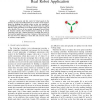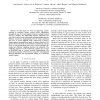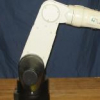182 search results - page 27 / 37 » Robot visual servoing with iterative learning control |
ICRA
2007
IEEE
14 years 1 months ago
2007
IEEE
— Accurate and fast control of wheel speeds in the presence of noise and nonlinearities is one of the crucial requirements for building fast mobile robots, as they are required i...
EGITALY
2011
12 years 6 months ago
2011
Recent advances in gesture recognition made the problem of controlling a humanoid robot in the most natural possible way an interesting challenge. Learning from Demonstration fie...
ICRA
2009
IEEE
13 years 4 months ago
2009
IEEE
This paper proposes a throwing manipulation strategy for a robot with one revolute joint. The throwing manipulation enables the robot not only to manipulate the object to outside o...
CDC
2008
IEEE
14 years 1 months ago
2008
IEEE
— In this paper, we focus on improving contour tracking in precision motion control (PMC) applications through the use of Cross-Coupled Iterative Learning Control (CCILC). Initia...
ICPR
2006
IEEE
14 years 7 months ago
2006
IEEE
Most methods for visual control of robots formulate the robot command in joint or Cartesian space. To move the robot these commands are remapped to motor torques usually requiring...




